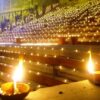- Empty cart.
- Continue Shopping
Importance of Makar Sankranti

Right after the celebrations of New Year, people in the eastern belt of India are gearing up for Makar Sankranti, the first Hindu festival of the year. Observed in different parts of the country under different names, Makar Sankranti denotes the entry of the sun into the zodiac sign of Makara (Capricorn) as it travels on its celestial path. The festival of Makar Sankranti will be celebrated on January 14, 2021.
According to Vikram Samvat Panchang, “The time between Makar Sankranti and 40 Ghatis (roughly 16 hours for Indian locations if we consider 1 Ghati duration as 24 minutes) from the time of Makar Sankranti is considered good for auspicious work. This duration of forty Ghatis is known as Punya Kaal. Sankranti activities, like taking bath, offering Naivedhya (food offered to the deity) to Lord Surya, offering charity or Dakshina, performing Shraddha rituals and breaking fast or Parana, should be done during Punya Kaal. If Makar Sankranti happens after Sunset then all Punya Kaal activities are postponed till the next sunrise. Hence, all Punya Kaal activities should be done during the day time.”
History of Makar Sankranti
Marking the onset of summer and the six months long auspicious period for Hindus known as Uttaarayan, this festival is observed according to the solar cycles. The festivities associated with the day is celebrated by different names in different parts of the country — Lohri in North India, Sukarat in Central India, Bihu in Assam, Pongal in Tamil Nadu and Makar Sankranti in Bengal, Bihar, Odisha and the neighbouring regions, and celebrates the harvest season.
On the day of Makar Sankranti, various spiritual practices are observed. It is common for people to take a holy dip in rivers and it is generally believed that doing so would absolve them of their past sins.
Importance of Makar Sankranti
Thanking the Almighty for a good harvest and seeking his blessings for the future, people prepare and indulge in a lot of delicacies — sticky sweets made of jaggery and sesame, patishaptas, jaggery and rice pudding, among others. People spend the day with each other, singing traditional folk songs and dancing. In the evening, they light a bonfire and prepare sumptuous meals to be enjoyed together.

